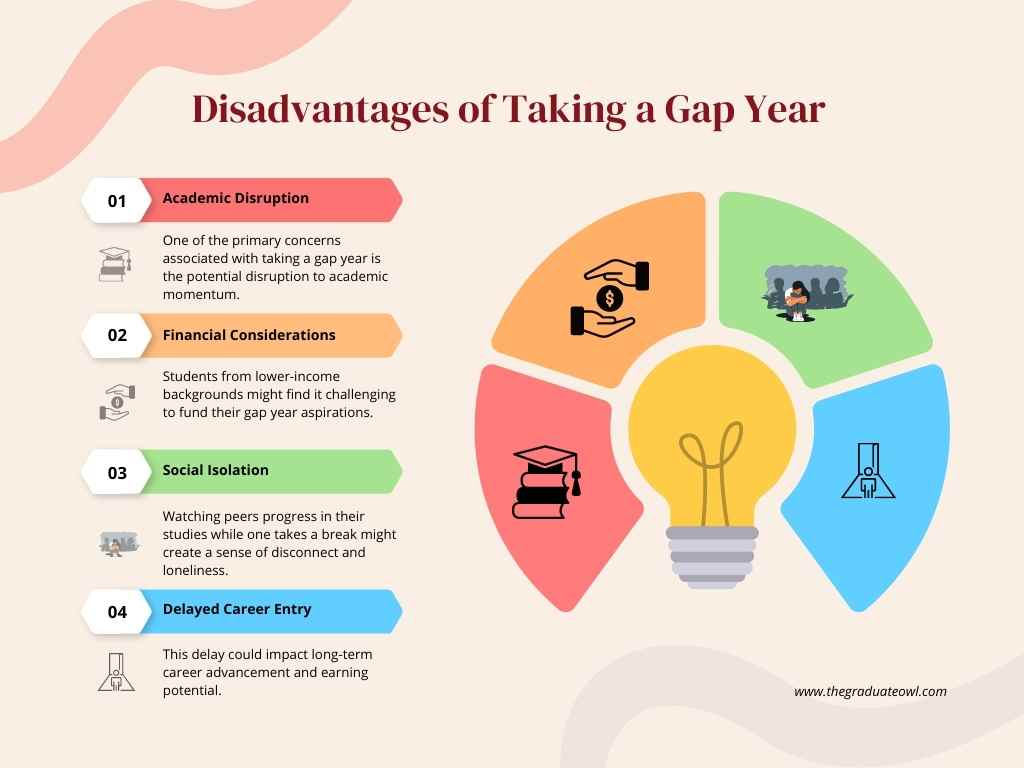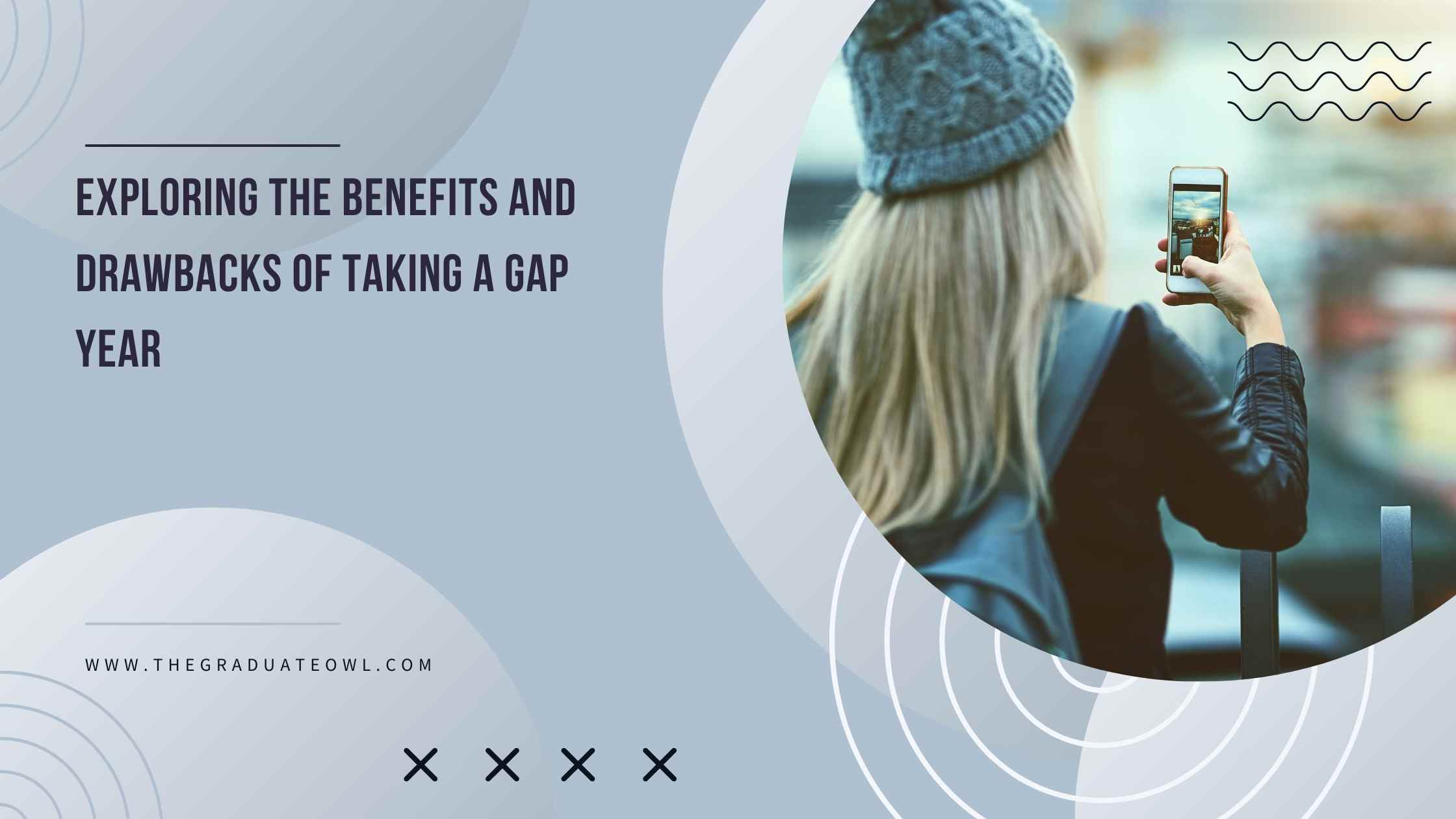In the realm of education and growth, the “gap year” has emerged as a topic of interest. This break from studies, taken after high school or college, offers a chance for self-discovery and skill-building. It involves diverse experiences, from travel and volunteering to internships, fostering personal development. This exploration examines its pros and cons, shedding light on its impact on growth, academics, and careers. We delve into its advantages while addressing challenges, empowering individuals to navigate their educational journey and personal evolution.
Advantages of Taking a Gap Year
1. Enhanced Self-Discovery
Taking a gap year provides a unique chance for self-exploration. Through travel, work, or volunteering, individuals uncover their strengths and passions, leading to increased self-confidence and a clearer sense of purpose. This introspective journey shapes a stronger foundation for future academic and personal pursuits.
2. Cultural Enrichment
Immersing in different cultures during a gap year fosters open-mindedness and global awareness. Exposure to diverse perspectives and lifestyles enhances intercultural competence, a skill increasingly vital in our interconnected world. This cultural enrichment expands horizons and broadens understanding.
3. Practical Skill Development
Participating in internships, part-time roles, or volunteering provides real-world experience that extends beyond the confines of the classroom. This engagement refines essential skills like effective communication, adept problem-solving, and efficient time management. These practical proficiencies serve individuals well in their academic, professional, and personal lives.
4. Clarified Goals
A gap year provides time for reflection, helping individuals define academic and career aspirations. By stepping away from the academic routine, students gain clarity on their interests and goals. This renewed focus leads to more informed decisions when returning to formal studies, enhancing motivation and achievement.

Disadvantages of Taking a Gap Year
1. Academic Disruption
Taking a gap year can disrupt academic momentum. Reintegrating into studies after a hiatus might pose challenges in maintaining the same level of focus and productivity, potentially affecting grades and long-term educational progress.
2. Financial Strain
A gap year can be financially demanding. Expenses like travel, program fees, and living costs can accumulate. This poses challenges, particularly for students from lower-income backgrounds, who might struggle to fund these experiences and cover the associated expenditures.
3. Social Isolation
During a gap year, individuals might experience feelings of social isolation. Watching peers continue their studies while one takes a break can lead to a sense of detachment and loneliness, impacting social connections and a sense of belonging.
4. Delayed Career Entry
Opting for a gap year, particularly for work or travel, might delay entry into the job market or further education. This postponement could influence long-term career advancement and earning potential, potentially creating challenges in professional development.

Making the Most of a Gap Year
It is important to approach the gap year with a well-structured plan. This will make it a productive experience for you.
Move on and consider the following steps:
1. Set Clear Goals
Define your objectives for the gap year. Whether it’s acquiring new skills, gaining work experience, or exploring personal interests, clear goals provide direction and purpose. These objectives guide your activities and maximize the value of your gap year journey.
2. Research and Plan
Thoroughly explore options like internships, volunteer programs, or travel opportunities. Planning ahead ensures you make the most of your time, securing placements and experiences aligned with your goals. Research equips you with the information needed for a rewarding gap year.
3. Budget Wisely
Craft a realistic budget encompassing all expenses, from travel to accommodation and program fees. Careful financial planning helps manage costs effectively, preventing overspending. This financial discipline ensures you can fully engage in activities without unnecessary financial stress.
4. Stay Engaged
During your gap year, continue pursuing your passions. Enroll in online courses, attend workshops, or join local initiatives. Staying engaged with learning and activities maintains momentum and enriches your experience, contributing to personal growth and skill development.
5. Reflect and Learn
Regularly reflect on your experiences and insights gained throughout the gap year. This introspection fosters personal growth, helping you distill lessons learned and refine future goals. Your reflections contribute to a meaningful and transformative gap year journey.

While potential disruptions to academics and financial challenges pose concerns, strategic planning can mitigate these downsides. By embracing a gap year with clear goals and a proactive mindset, individuals can harness its benefits while being mindful of the drawbacks. This transformative journey can sculpt personal growth, enhance skills, and contribute to a well-rounded education. Ultimately, making the most of a gap year involves a thoughtful evaluation of its potential impact on one’s unique journey.

